
|
Astronomy Picture Of the Day (APOD)
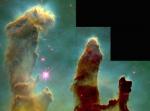 M16: Stars from Eagle's EGGs
M16: Stars from Eagle's EGGs
25.11.2001
Newborn stars are forming in the Eagle Nebula. This image, taken with the Hubble Space Telescope in 1995, shows evaporating gaseous globules (EGGs) emerging from pillars of molecular hydrogen gas and dust. The giant pillars are light years in length and are so dense that interior gas contracts gravitationally to form stars.
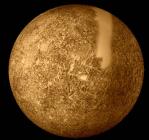 Mariner s Mercury
Mariner s Mercury
24.11.2001
Mercury, the closest planet to the Sun, remains the most mysterious of the Solar System's inner planets. Hiding in the Sun's glare it is a difficult target for Earth bound observers.
 Counting Falling Stardust
Counting Falling Stardust
23.11.2001
In the clear, dark and moonless predawn hours of November 18, Greenbelt, Maryland's local baseball field was packed. The crowd stared skyward and occasionally conversed in hushed and reverent tones. "How many did you count?" a man asked.
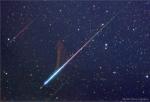 Fireball, Smoke Trail, Meteor Storm
Fireball, Smoke Trail, Meteor Storm
22.11.2001
Returning from orbit, space shuttles enter the atmosphere at about 8 kilometers per second as friction heats their protective ceramic tiles to over 1,400 degrees Celsius. By contrast, the bits of comet dust...
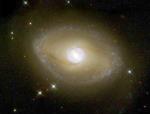 The Galactic Ring of NGC 6782
The Galactic Ring of NGC 6782
21.11.2001
Do spiral galaxies look the same in every color? NGC 6782 demonstrates colorfully that they do not. In visible light, NGC 6782 appears to be a normal spiral galaxy with a bright bar across its center.
 A Leonids Star Field
A Leonids Star Field
20.11.2001
As meteor after meteor streaked across a moonless sky, photographers across the world snapped pictures of the 2001 Leonids Meteor Shower. Many recognized this as the best meteor shower they had ever seen. In fact, the 2001 Leonids was the most active meteor shower since the mid-1960s.
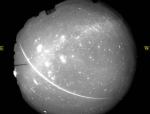 A 2001 Leonids Meteor Shower Fireball
A 2001 Leonids Meteor Shower Fireball
19.11.2001
The 2001 Leonids Meteor Shower gave quite a show to many parts of the world yesterday during the early morning hours. Many sleepy observers venturing into their own backyards were treated to several bright meteors per minute streaking across the sky.
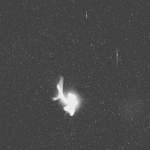 A Leonid Meteor Explodes
A Leonid Meteor Explodes
18.11.2001
Last night and tonight, a lucky few may see a meteor explode. As our Earth passes unusually close to debris expelled from Comet Tempel-Tuttle, many sand-sized particles from this comet are entering and burning up in the Earth's atmosphere.
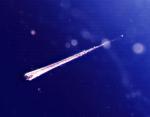 Catching Falling Stardust
Catching Falling Stardust
17.11.2001
This carrot-shaped track is actually little more than 5 hundredths of an inch long. It is the trail of a meteroid through the high-tech substance aerogel exposed to space by the shuttle launched EURECA (European Recoverable Carrier) spacecraft.
 Leonid Watching
Leonid Watching
16.11.2001
Will the Leonids storm this year? The annual Leonid meteor shower should peak this weekend and some predictions suggest that "storm" rates of a thousand or more meteors per hour are possible for observers located in eastern North and Central America during the early morning hours of Sunday, November 18.
|
January February March April May June July August September October November December |
|||||||||||||||||||||||||||||||||||||||||||||||||